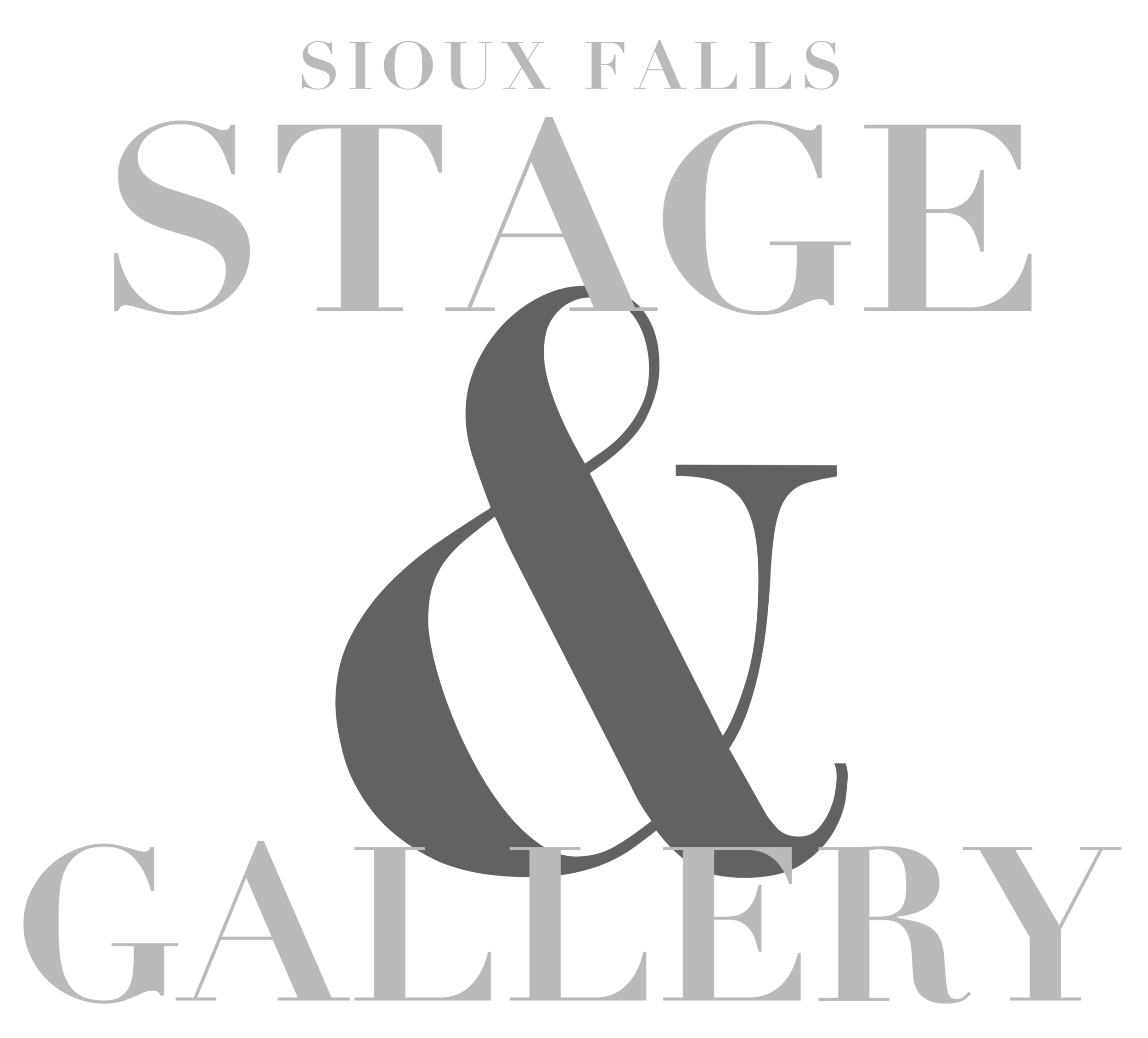10 Things with Sara Crosby
“10 Things” is a regular feature in which the Sioux Falls Stage staff answers 10 burning questions with a local performing artist—this quarter we feature long-time arts creator, supporter and benefactor Sara Crosby.
1. What is the single-most defining moment of your performing career?
There are perhaps two moments that I think of. One is auditioning for Sidney Poitier and shaking his hand over the desk he was sitting behind in the casting director’s office. The other was a phone conversation with my commercial agent that made me realize that I didn’t appreciate the more shallow parts of the business and that I wanted to change my career.
2. Who are your biggest acting influences?
Katharine Hepburn, Laurence Olivier, Dame Judith Anderson—this list would not be complete without mentioning Jean Muir, who was a Warner Bros. film star in the 30s, 40s and into the 50s before she was blacklisted during the McCarthy Era. She was my first acting teacher in college and was my mentor and friend until her death in the mid-1990s. She came to almost every big show I did during my New York days. I remember the day she finally looked at me and said that I was finally an actor doing great work. I had longed to get her approval for years. She was wise, strong, courageous, tough, and would push you beyond where you ever dreamed of going.
3. Name three of your biggest theatre résumé highlights.
Wilhelmina in The Passion of Dracula (Cherry Lane Theatre)
Mollie in The Mousetrap (Barter Theatre)
Kathy in Real as Air (Augustana University)
4. Describe when you knew you wanted to be an actor.
I was 11 in the fifth grade, and I was cast as Rebecca in Our Town for the Iowa State University Theatre. It was the first real show I had done, and I caught the bug really bad. I cried when the final curtain came down—I was the happiest I had ever been during that show.
Crosby as Mollie Ralston in The Mousetrap, 1983, Barter Theatre, Washington, D.C.
5. What’s your acting warmup routine?
I always warm up my voice and my body—stretches, singing, etc. I do pace backstage right before and meditate and breathe to get focused while I pace. I have traditionally—always, my whole career—paced silently backstage.
6. What’s your favorite non-theatre pastime?
Well, I love my work as a social worker, advocating for mental health and addiction issues, as well as giving workshops on issues around privilege and social justice. Otherwise, I love to be outside, walking, hiking and being with my dog, Oliver.
7. What’s your process for wrapping a show?
It is always hard to say goodbye to a character that has gotten under your skin and been a part of you. There is always a grieving process.
8. Deserted island game—pick three scripts to take with you.
Hamlet (or maybe one of the comedies) by William Shakespeare
When We Were Young & Unafraid by Sarah Treem
The Year of Magical Thinking by Joan Didion
9. What is your hope for the next generation of theatre artists?
I wish for these young talented artists to not sell themselves short by looking only at the end result, the performance, but rather to immerse themselves in the process of building a character, the detective work, finding all those lovely, delicious things that motivate a person to say the words the author wrote, to cross from stage left to stage right, to find all the layers of the human condition that takes a character and their story from the page to three dimensions on the stage.
10. Give advice to fellow theatre artists in just five words.
Dare to live your truth.


